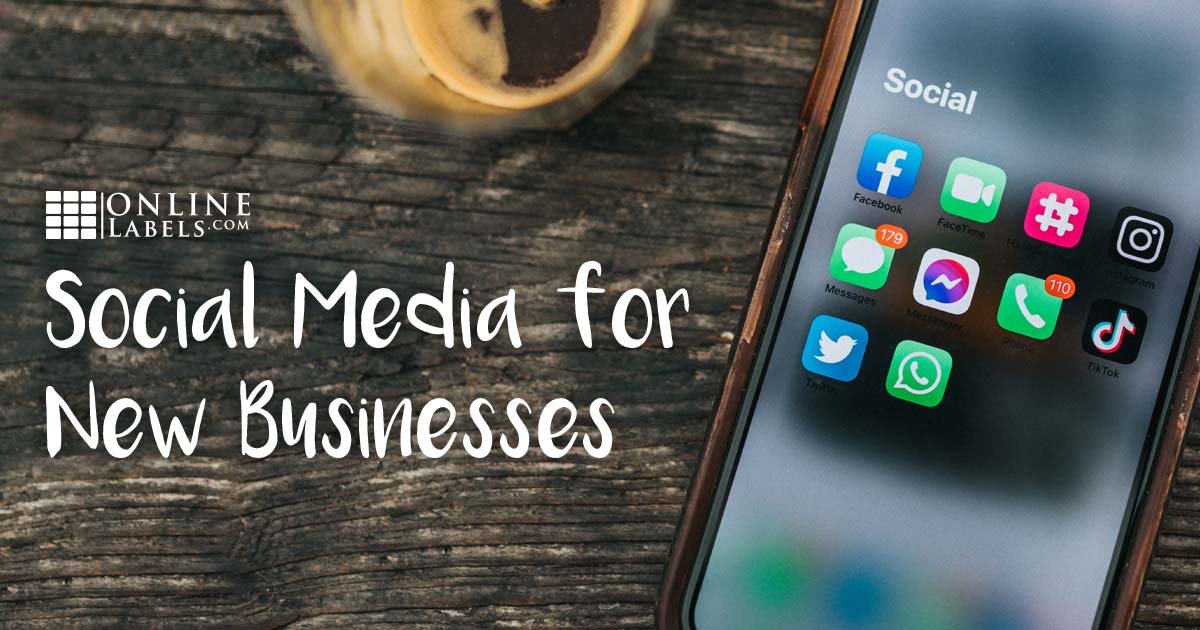Beginner's Guide to Getting Started on Social Media

Having a presence on social media has been important for quite a while but it's more important than ever to actually be active on social platforms. Why? Because there are more users (of all demographics) spending more time across multiple platforms. For some insight, there are over 3.5 billion people using social media worldwide, according to Statista.
Social media is more than just a space where people consume content. It's a community of users interacting and connecting with one another and brands. It's a valuable asset and plays an essential role in growing your business.
Benefits of Social Media
You've made it to this page so you probably know there are a number of benefits to social media for small business owners. Here are a few that really stand out:
- There are minimal costs with an opportunity for a big return. Whatever your current goals may be, there's a way to achieve them with the help of social media. Business accounts are free to sign-up and utilize organically. If you want to explore (and target), you can run paid advertisements and promote your posts. Keep in mind, you control the spend and there's no pressure for how much you invest. Paying to promote your content doesn't necessarily mean you'll achieve your goals faster either.
- Increase brand awareness and loyalty. We've covered how many people are using social media, so you can see why actively and effectively using the platforms can increase your brand awareness. You can use social media not only to put your brand in front of new audiences, but also to retain existing customers. Through social media, businesses can interact with customers, share news, and provide customer service in new ways. It's a unique opportunity to build two-way communication and foster real relationships with people.
- Boost website traffic. Each platform and post offer a new opportunity to bring users (both your current and potential customers) to your website to learn more. And if your business sells a product that can be purchased online, you can even do so directly through the platform.
Plan Before You Post
Before we get into what you should be posting, you should have a plan just like any other area of your business. A plan ensures there are no wasted efforts. You likely want social media to be a part of your long-term business strategy and diving in without a plan skips over that. Just in case you don't have one in place yet, we'll briefly get you off the ground.
Create goals (both short and long term) and objectives. Hone in on goals that move the needle and align with your overall business goals. This will allow you to analyze your efforts and optimize accordingly.
Determine your audience. Think beyond your current customers. While they're definitely a part of your target audience on social media, consider the people you're trying to reach and what their needs are.
Decide what platforms you'll invest in. The social platforms with the highest active users might come to mind (Facebook, Instagram, Twitter, YouTube, TikTok) but do some research and determine where your target audience is spending their time. There's a greater return to creating and sharing quality content on the platforms your target audience is actually spending their time.
What to Post
Now that you have a plan in place, let's discuss what you should be posting. You probably guessed it—the content you're creating and sharing should be tailored to the platform and your audience. We'll run down three of the most used social media platforms and what typically resonates with that audience.
Facebook: It makes sense to start with the platform that has the most active daily users, right? Users enjoy having conversations, hearing about new products, launches and events here. The mediums Facebook offers reflect that. Think Facebook Live, creating and managing an event page, groups, reviews, polls, etc. The content you post here is ideal for boosting brand awareness and should spark conversation.
Instagram: Instagram is all about aesthetically pleasing visuals. From short and long form video to carousel posts and guides, Instagram is constantly introducing a new format or feature to share your content. Each posting format has different advantages giving you the flexibility to utilize whichever helps achieve your goals and resonates best with your audience. Regardless of what kind (traditional photo, carousel or short video), your posts should stay true to your brand (from brand colors to your personality). Instagram TV is great for long form videos (up to 60 minutes). You can create a how-to video on how to use your product, where to find you if you have a physical location, host a virtual event and more! If you want to keep things more casual, Instagram Stories is the way to do it!
YouTube: While you can post video on both Facebook and Instagram, no platform dominates video quite like YouTube. Aside from Google, users are coming here for the answers to their questions and it's essentially a search engine. So, think about the questions your business helps answer or how your product or service can make someone's life easier or better, and create content around that. Be sure your titles and video descriptions are using strong keywords and tags. You can also utilize video you already have that likely lives on your website.
Utilize the Latest Features Available
Regardless of which platform you choose to invest the most time on, utilize the latest features when you can. Social media algorithms favor posts using their newest features. Give new tools like Instagram Guides and Reels a try. Don't sweat it if you don't perfect it right away. Just listen to your audience. If they're engaging with it, they like it and you should do more of it.
Be Social
Most importantly, don't forget to engage. Regardless of platform, users are there to connect, and interacting with them does just that. Social media platforms are built to be two-way forms of communication. Respond to comments, answer direct messages, and ask your followers questions. You'll soon find yourself on your way to building a growing and loyal brand!
Looking for more business tips? Check out all of our small business resources.


